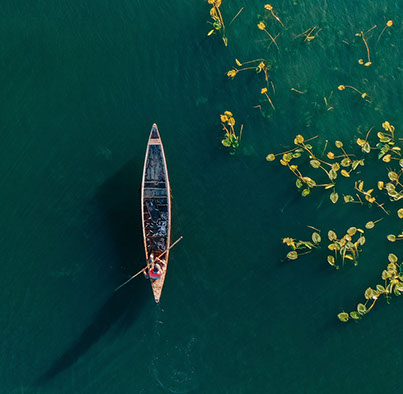ASI TALE outlines and articulates the collaborative, interdisciplinary work of 5 individuals from varied backgrounds, by employing a kaleidoscope of perspectives from diverse sources, including books, articles, travelers’ notes, myths, drawings, gravures, maps, photographs. It aims to produce a multimedia snapshot of the life of this ancient river.
Asi,"The Rebel", starts in Lebanon, and passes through a total of three different countries (Lebanon, Syria, Turkey). By drawing out the voices stored in the alluvial deposits of the river, ranging from the Early Bronze Age through to the Hellenistic, Roman, Byzantine and Crusaders periods, the past has been shown to hold messages which have been used to create a rich multilayered story that demonstrates how the river has played a part in shaping the lives of the people who have engaged with it. The TALE adopts a historical narrative method, which will be expanded upon below.
Like other rivers, the Asi is a river with a number of faces and in association a section of names. The first documented mention of its name appears in a selection of Egyptian sources that describe the Battle of Kadesh. According to these sources, the Battle of Kadesh occurred in proximity to a water source described as the Araunti: "river flowing down". However, the Persian rulerI. Auruuant, referred to the same body of water as the Orontes. In contrast, one of the early Macedonian communities living along the banks of the river named it Axius, in memory of the chief river in distant upper Macedonia. It also held a handful of fanciful names such as Dracon and Typhon as a result of its unsteady character.
In Helenistic and Roman Periods, the river continued to carry the namelled Orontes, according to Strabo, an individual responsible for the construction of a bridge over the river (See Roman, Crusaders and Turkish Republic periods for following stories of the Bridge). However, according to Greek mythology, the river embodies a series of supernatural connections, and this can be seen through its kinship structure and familial relationships. Specifically, the river is understood to be the son of Okeanos and Tethys (who are the God of the oceans and the goddess of the springs respectively), and has a number of brothers who are also riverine, including the Tigris, Eupharates and Nile.
In the Middle Ages, local Arabic populations referred to the river as Al Urunt or Al Maklub terms which can be translated as: the overturned. This slightly irritated name was used in association with its failure to irrigate the fields without additional technological support, for example, with water wheels. According to Bouchier, chiming with this interpretation, the river was perceived to flow in a reverse direction; that is, from south to north. Also, echoing the above, its current name, the Asi River, translated as the rebel, is claimed to refer to its divergent characteristics of reverse and unsteady flow.
You can download the research here.
We hope you enjoying reading our story as much as we enjoyed making it.
Contributions from:
FLAVIA VANNI
“Water flows and found its way”
Asi River in the Middle Ages
ALESSANDRO CARABIA
“Construction for the River”
Asi River in Hellenistic (300-64 BCE) and Roman Period (64 BCE – 476 CE)
TUĞÇE TEZER and EBRU BINGÖL
Asi River in Mamluk (1268-1516) and Ottoman Periods(1516-1918)
“River as a Poetical Picturesque Beauty of Lost Dreams”
EBRU BINGÖL
Asi River in French Mandate Period (1918-1938)
“Civilization of the River”
KORAY ALIM CENGIZ
Asi River in Turkish Republic Period (1939 - present)
“Deconstruction and Reconstruction of the River”
© FLOW TALES
info@flow-tales.com
